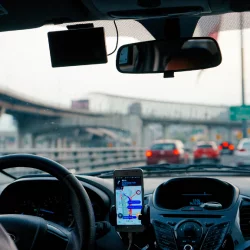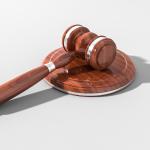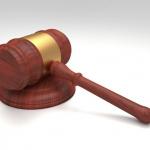How Weather Conditions Affect Car Accident Liability in Minneapolis
Car accidents are often associated with driver error, but weather conditions can also play a significant role. Rain, snow, fog, ice, and high winds can create hazardous driving environments, increasing the likelihood of accidents.
Determining liability in car accidents caused by poor weather conditions can be complex, involving careful consideration of how the weather contributed to the crash and whether drivers took appropriate precautions.
If you were injured in a collision during bad weather, you could benefit from talking to a top-rated car crash attorney in Minneapolis.
Understanding Weather-Related Car Accidents
According to the Federal Highway Administration (FHWA), weather conditions contribute to approximately 21% of all motor vehicle crashes in the United States. Rain is the most common culprit, but snow, ice, fog, and wind also pose significant risks. Weather-related accidents can occur due to reduced visibility, slippery roads, decreased vehicle handling, and longer stopping distances.
How Weather Conditions Influence Liability
Liability in a car accident typically hinges on proving negligence. Even in adverse weather, drivers are expected to adjust their driving to the conditions. Failure to do so can make them liable for any resulting accidents. Here are some ways different weather conditions can affect liability:
1. Rain and Wet Roads
Rain reduces visibility and creates slippery road surfaces, increasing the risk of hydroplaning. Drivers are expected to slow down, increase following distances, and use headlights. If a driver fails to take these precautions and causes an accident, they may be held liable.
Example: If a driver speeds through heavy rain and rear-ends another vehicle, they could be found negligent for not adjusting to the conditions.
2. Snow and Ice
Snow and ice significantly impact road traction. Drivers should drive slowly, avoid sudden maneuvers, and use snow tires or chains when appropriate. Ignoring these precautions may lead to liability.
Example: If a driver loses control on an icy road because they were traveling too fast for conditions, they could be held responsible for the crash.
3. Fog
Fog reduces visibility, making it essential for drivers to use low-beam headlights and reduce speed. Tailgating or failing to use headlights in foggy conditions can lead to accidents and subsequent liability.
Example: A driver who rear-ends another vehicle in dense fog because they were following too closely can be deemed negligent.
4. High Winds
Strong winds can make it difficult to control a vehicle, especially for high-profile vehicles like trucks and SUVs. Drivers should maintain a firm grip on the steering wheel and be cautious around large vehicles that may sway in the wind.
Example: If a driver fails to account for high winds and causes an accident by veering into another lane, they may be held liable.
Factors Courts Consider When Determining Liability
When weather conditions play a role in an accident, courts and insurance companies examine several factors to determine liability:
- Driver Behavior: Did the driver adjust their speed and following distance to match the weather conditions?
- Use of Safety Equipment: Were headlights, windshield wipers, and other safety features properly used?
- Road Conditions: Were there warnings about hazardous conditions, and did the driver heed them?
- Vehicle Maintenance: Was the vehicle properly maintained, with functioning brakes and good tire tread?
- Traffic Laws: Did the driver obey speed limits and other traffic laws, especially those specific to weather conditions?
Can Weather Alone Be the Cause of an Accident?
While severe weather can contribute to accidents, it rarely absolves drivers of responsibility. Drivers have a legal obligation to exercise caution regardless of the weather. Courts generally expect drivers to:
- Slow down during adverse conditions
- Increase following distances
- Use appropriate lights
- Pull over if conditions become too dangerous
In some cases, an accident may be deemed a "no-fault" incident if both drivers took reasonable precautions. However, this is rare, and liability often falls on drivers who failed to adapt to the conditions.
Shared Liability in Weather-Related Accidents
In certain situations, multiple parties may share liability. For example:
- Poor Road Maintenance: If a municipality fails to clear snow or ice, it may share liability.
- Defective Vehicle Parts: If brakes or wipers malfunction, the manufacturer or mechanic could be partially responsible.
- Other Drivers: If another driver’s negligence combined with the weather caused the accident, both parties might share liability.
Steps to Take After a Weather-Related Car Accident
If you’re involved in a weather-related accident, taking the following steps can help protect your rights and strengthen any potential claim:
- Ensure Safety: Move to a safe location if possible and check for injuries.
- Call Emergency Services: Report the accident to the police and request medical assistance if needed.
- Document the Scene: Take photos of the vehicles, road conditions, weather, and any visible damages.
- Exchange Information: Collect contact and insurance details from all involved parties.
- Gather Witness Statements: If there are witnesses, get their accounts and contact information.
- Seek Medical Attention: Even if injuries seem minor, get evaluated by a healthcare professional.
- Notify Your Insurance Company: Report the accident promptly and provide accurate details.
- Consult a Personal Injury Attorney: A lawyer can help navigate the complexities of liability and insurance claims.
Preventing Weather-Related Accidents
While weather conditions are beyond a driver’s control, taking precautions can reduce the risk of accidents:
- Check Weather Reports: Stay informed before hitting the road.
- Maintain Your Vehicle: Ensure brakes, tires, and lights are in good condition.
- Adjust Driving Habits: Slow down and increase following distances in adverse conditions.
- Use Proper Equipment: Equip your car with snow tires, chains, and functional windshield wipers.
- Stay Off the Road: If conditions are too dangerous, avoid driving unless absolutely necessary.
Weather conditions can complicate car accident liability, but they rarely excuse negligent driving. Drivers are expected to adjust their behavior to match road conditions, and failure to do so can result in liability. If you’ve been involved in a weather-related accident, understanding how liability is determined can help you navigate the claims process and protect your rights.
By driving cautiously and staying informed, you can reduce the chances of a weather-related accident and ensure you’re not held liable for preventable mistakes.
More to Read:
Previous Posts:









